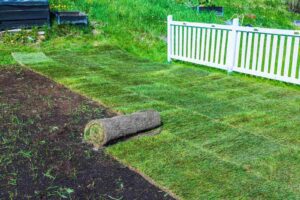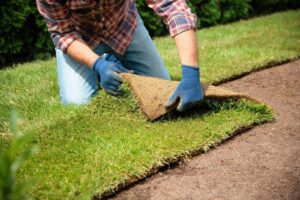We’ve passed the winter solstice, and we’re now knee-deep in the coldest part of the year, and you may be wondering if you’ll experience sod wilt.
Your yard is a significant investment, so you might be worried about how your grass will survive a tough winter. Will your sod wilt or die in the winter? Can weeds infiltrate your carefully curated yard during the off-season? Will the freezing and thawing cause damage to the grass? Stay tuned to find out.
Basics of Sod
There are a few key characteristics you need to understand about sod. For starters, sod can be a hefty investment for your yard, and since it’s a carefully grown plant, many homeowners assume that sod is fragile. In reality, sod is very hardy and can withstand a lot of changes in the weather and moisture levels. Permanent freezes, persistent flooding, or drought may harm your sod, but if you’ve chosen the right sod for your climate region, you should have total confidence in the lifespan of your grass.
Sod Roots
We watch carefully to make sure that sod will take root, but in many cases, it’s a delayed event. Especially in the colder months of fall, newly laid sod might not take full root until the following spring. While this sounds scary, it’s actually very normal. The roots of the sod will be insulated so long as you lay the sod well before the first big freeze of the season, which is typically in October.
Sod Wilting
There are some areas of the United States where the climate and sod choices work together to produce healthy grass year-round. For instance, Kentucky bluegrass, tall fescue, and other varieties of grass might remain relatively green despite cold weather, depending on your soil and moisture levels. However, there are varieties of sod that are the appropriate choice for your climate but will still wilt during the winter months.
In Utah, Kentucky bluegrass, Bermuda, and our special drought-resistant sod blend are very common choices that can survive the dramatic swings of Utah summers and winters. Don’t panic when your grass begins to brown and wilt during the winter months, though. The grass is just getting ready to hibernate and conserve energy during a season with less sunlight.
How to Re-Green Your Sod with Monarch Sod
If your sod has wilted due to low moisture or freezing temperatures, you can revive it by ramping up your moisturizing schedule. Increase your watering and combine it with a fresh layer of quality fertilizer, and you should begin to see the green return to your lawn.
Don’t let a cold winter scare you away from quality sod that will bring you joy for years to come. Monarch Sod can help you find the right grass for your yard and get it just right. See what we can do for you. We serve multiple counties in Utah, including Davis, Salt Lake, and Utah counties. var /*99586587347*/












